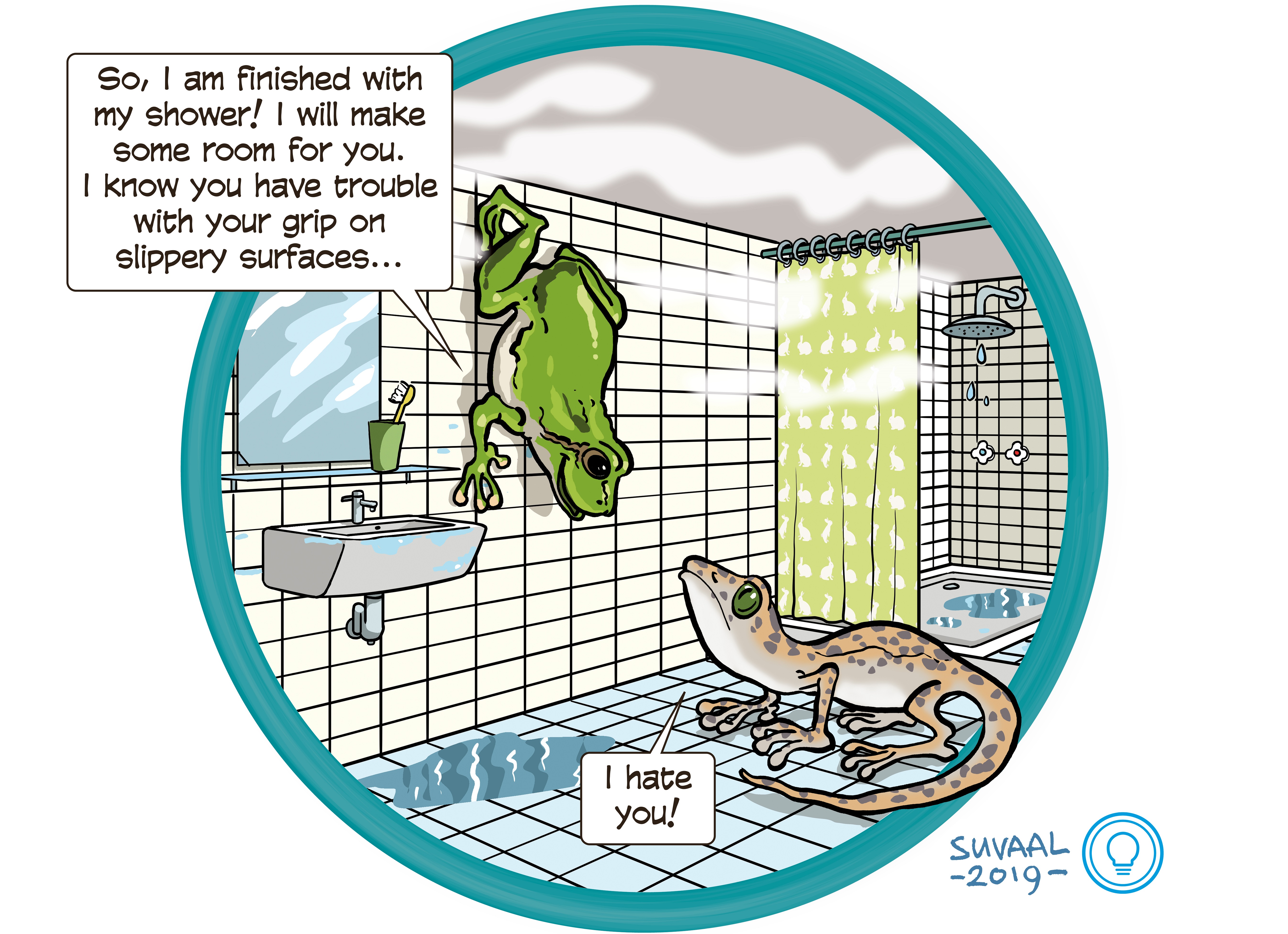Grip on soft, vulnerable & wet substrates
Themes: Materials, Life Science & health

Summary of the project
The researcher works on developing adhesive methods for gripping on soft, vulnerable, and wet substrates using a nature-inspired design approach. How can you stick to these kind of substrates without using a glue?
Secure grip on soft, vulnerable, and wet substrates remains a challenging terrain in engineering. While animals such as invertebrates and amphibians have evolved a wide array of methods for effective gripping in their wet habitat, surprisingly little is known about how to use wet adhesion for similar feats in engineering.
The researcher uses forward and reverse biomimicry to understand how soft-body animals grip on wet substrates. Understanding grip in nature will benefit the development of medical devices such as in vivo robots and robotic arms lifting fruits or meat without damaging them.
One example of her work is the development of gripping pads mimicking the toe pads of tree frogs. The gripping pads rely on a combination of external and internal architecture in order to maximize and preserve contact with the soft substrate. Another example is the development of self-propelling medical needles mimicking the functional anatomy of the ovipositor of parasitic wasps: these wasps are able to insert their flexible ovipositor without buckling in solid substrates such as fruits or the body of larvae. A third final example is the development of stents. Through a special compliant mechanism, the stent is able to safely grip to the arterial wall without tensioning it, and keep artery open.
What's next?
While the methods developed so far are functional on soft and vulnerable substrates, the presence of excessive liquid at the interface remains a challenge. The next step is to get a better understanding of how to achieve dry grip in wet conditions, for example by using surface architectures that promote drainage.
Dr. Dimitra Dodou